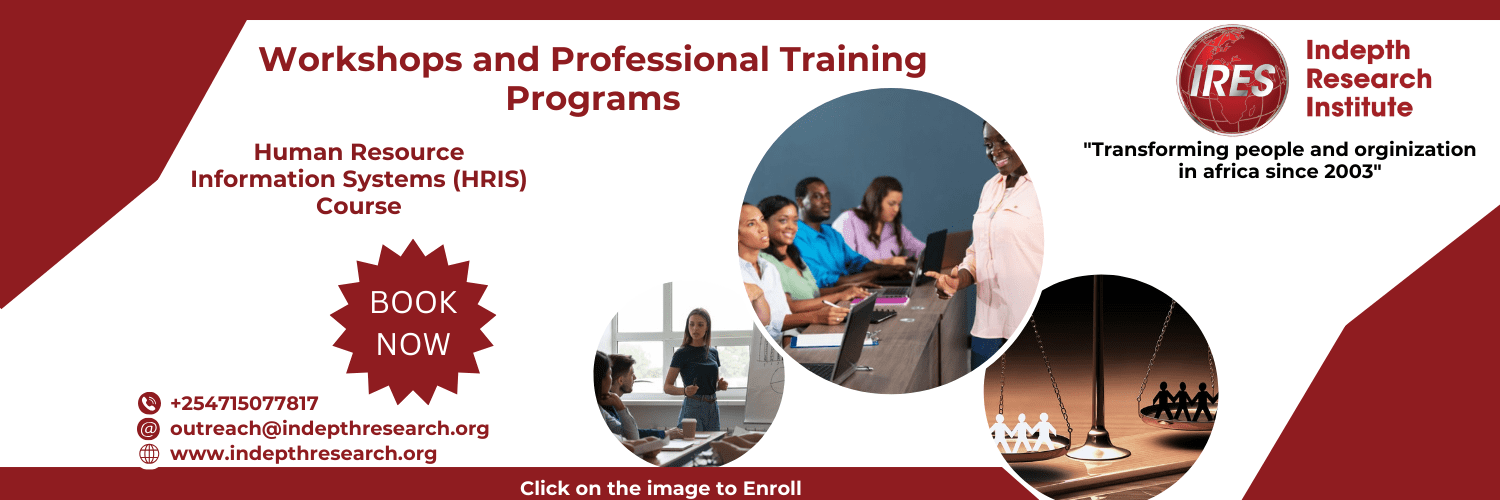Microsoft Excel is a powerful tool that allows users to create, manipulate, and analyze data in a structured manner. Excel provides a grid of cells organized in rows and columns, where users can input numerical and text data, perform calculations, create charts and graphs, and generate reports. It offers a range of features and functions that enable users to perform various tasks, such as data entry, data analysis, data visualization, and automation.
In today’s digital era, Microsoft Excel has become an indispensable tool for professionals across various industries. Human resources (HR) practitioners, in particular, can greatly benefit from harnessing the power of Excel to streamline and enhance their daily operations. Whether you’re a seasoned HR professional or just starting your career in HR, this guide will walk you through practical ways to leverage Microsoft Excel to improve your HR skills. From data analysis to process automation, Excel can become your go-to tool for maximizing efficiency and productivity within the HR realm.
Microsoft Excel is a powerful tool that can revolutionize the way HR professionals manage data, analyze information, and streamline processes. By harnessing its capabilities, HR practitioners can enhance their efficiency, accuracy, and decision-making abilities. This comprehensive guide will provide you with practical tips and techniques to leverage Excel effectively, enabling you to improve your HR skills and excel in your role.
RELATED: Corporate Training Programs Every Employee Should Take
-
Contents
Organizing and Managing Employee Data on Excel
One of the fundamental tasks of HR professionals is managing employee data efficiently. Excel provides a robust platform for storing and organizing employee information, such as personal details, employment history, and performance metrics. Utilize Excel’s spreadsheet functionalities to create structured databases, sorting and filtering capabilities to find specific information quickly, and formulas to automate calculations like age, years of service, and compensation details.
Excel provides a structured platform for managing employee data efficiently. Create a dedicated spreadsheet to store employee information, including personal details, employment history, training records, and performance evaluations. Use columns and rows to organize data logically, and apply formatting options to enhance readability. Leverage features like data validation to maintain data consistency and accuracy. Furthermore, sorting and filtering capabilities allow you to find specific information quickly.
-
Analyzing HR Metrics with Excel
Excel empowers HR professionals to analyze workforce metrics and generate meaningful insights. By organizing data in Excel spreadsheets, you can utilize built-in features such as pivot tables, charts, and graphs to visualize and analyze key HR metrics like turnover rates, performance ratings, and diversity statistics. Leverage Excel’s data analysis tools, such as conditional formatting, to identify trends, outliers, and patterns that can drive strategic decision-making within your organization. Excel’s analytical capabilities can help you gain valuable insights from HR metrics.
Start by identifying the key metrics relevant to your organization, such as turnover rates, recruitment costs, or training effectiveness. Utilize functions like SUM, AVERAGE, COUNT, and MAX to calculate and analyze numerical data. Pivot tables are particularly useful for summarizing and visualizing complex data sets, enabling you to identify trends, patterns, and areas for improvement.
-
Creating Reports and Dashboards on Excel
Reports and dashboards are essential tools for HR professionals to communicate critical information effectively. Excel offers a range of features that enable you to create visually appealing and insightful reports. Excel provides various chart types, including column charts, line charts, pie charts, and scatter plots, among others. Choose the chart type that best represents your data and goals.
Excel allows HR professionals to create visually appealing reports and dashboards that provide a snapshot of important HR metrics. Use charts, graphs, and conditional formatting to present data in a concise and engaging manner. Customize your reports to showcase key performance indicators, employee demographics, or diversity statistics. Excel’s features, such as spark lines and data bars, can be utilized to represent data trends and variances effectively.
-
Streamlining Recruitment Processes with Excel
Excel can streamline the recruitment and applicant tracking processes, making them more efficient and organized. Create custom templates to track candidate information, including resumes, qualifications, interview scores, and feedback. Use Excel’s conditional formatting and filters to sort and shortlist candidates based on specific criteria, making the selection process more objective and data-driven. Additionally, Excel’s mail merge feature can be utilized to send personalized communication to candidates, saving time and effort.
Excel can streamline various aspects of the recruitment process, making it more efficient and organized. Develop templates to track candidate information, including resumes, qualifications, and interview feedback. Leverage Excel’s sorting and filtering capabilities to shortlist candidates based on specific criteria. Additionally, Excel’s mail merge functionality can help automate communication with candidates, saving time and ensuring consistency.
-
Automating HR Tasks
Excel can streamline various HR processes, reducing manual effort and minimizing errors. Use macros and VBA (Visual Basic for Applications) to automate repetitive tasks such as data entry, report generation, and data validation. Excel’s built-in functions, such as IF statements and logical operators, can be employed to create dynamic spreadsheets that adjust calculations based on changing inputs. Automating HR processes with Excel not only saves time but also improves data accuracy and consistency.
Excel’s automation capabilities can significantly reduce manual effort and minimize errors in HR tasks. Utilize macros and VBA (Visual Basic for Applications) to automate repetitive processes such as data entry, report generation, or data validation. For instance, you can create a macro to automatically generate offer letters or calculate leave balances. By automating routine tasks, you can focus on more strategic HR initiatives.
-
Budgeting and Compensation Analysis
Excel simplifies the complex task of managing compensation and benefits data. Create spreadsheets to track salary structures, benefits packages, and payroll information. Utilize formulas and functions to calculate bonuses, deductions, and tax withholdings automatically. Excel’s scenario manager can help you model different compensation scenarios and assess their impact on the organization’s financials.
Moreover, Excel’s data validation feature ensures accurate data entry, reducing errors in calculations and payroll processing. Excel can be a valuable tool for managing budgets and conducting compensation analysis. Create spreadsheets to track salary structures, benefits packages, and payroll information. Utilize Excel’s financial functions, such as NPV (Net Present Value) and IRR (Internal Rate of Return), to perform budget calculations and analyze financial implications. Excel’s scenario manager allows you to model different compensation scenarios and assess their impact on the organization’s budget.
-
Training and Skills Development
Excel offers numerous resources and tutorials to help you enhance your HR skills. Explore online courses, YouTube tutorials, or specialized HR forums to expand your knowledge of Excel’s features and functionalities.
Regularly practice and experiment with different formulas, functions, and tools to become proficient in data analysis, reporting, and process automation. As you become more skilled, you’ll discover new ways to leverage Excel for HR-related tasks. There are numerous online courses and tutorials available that specifically focus on Excel for HR professionals.
Key Take away:
Mastering Microsoft Excel is a valuable skill for HR professionals looking to optimize their workflows and enhance their effectiveness. By utilizing Excel’s functionalities for organizing data, analyzing HR metrics, creating reports, streamlining processes, and conducting budgeting and compensation analysis, you can elevate your HR skills and deliver greater value to your organization. Embrace Excel as your ally, and unlock its potential to become a more efficient and strategic HR practitioner.
Microsoft Excel is a versatile tool that can significantly enhance HR professionals’ capabilities and improve overall efficiency. By leveraging Excel’s features for data management, analysis, reporting, and process automation, HR practitioners can streamline their workflows, make data-driven decisions, and provide valuable insights to their organizations. Mastering Excel as an HR professional can unlock a wealth of possibilities, enabling you to elevate your HR skills and contribute more effectively to your organization’s success.
Remember, continuous learning and practice are key to mastering Excel for HR purposes. Stay curious, explore new techniques, and apply Excel’s functionalities to solve HR challenges effectively. With dedication and a growth mindset, you can significantly enhance your HR skills and become a proficient Excel user in the context of human resources.
Indepth Research Institute (IRES) provides Excel training for professionals to be future industry leaders.
We have a firm belief that every organization has a unique purpose only they can fulfil in this world. We work with you in organizing your resources to exploit opportunities so that you can fulfil your purpose and realize full potential. We build the capacity of people, processes and systems for organizational success and growth as well as nurturing a thriving ecosystem.
Ready to enhance your skills and boost your career? Explore our corporate training programs now and start your journey to success.









Comment here